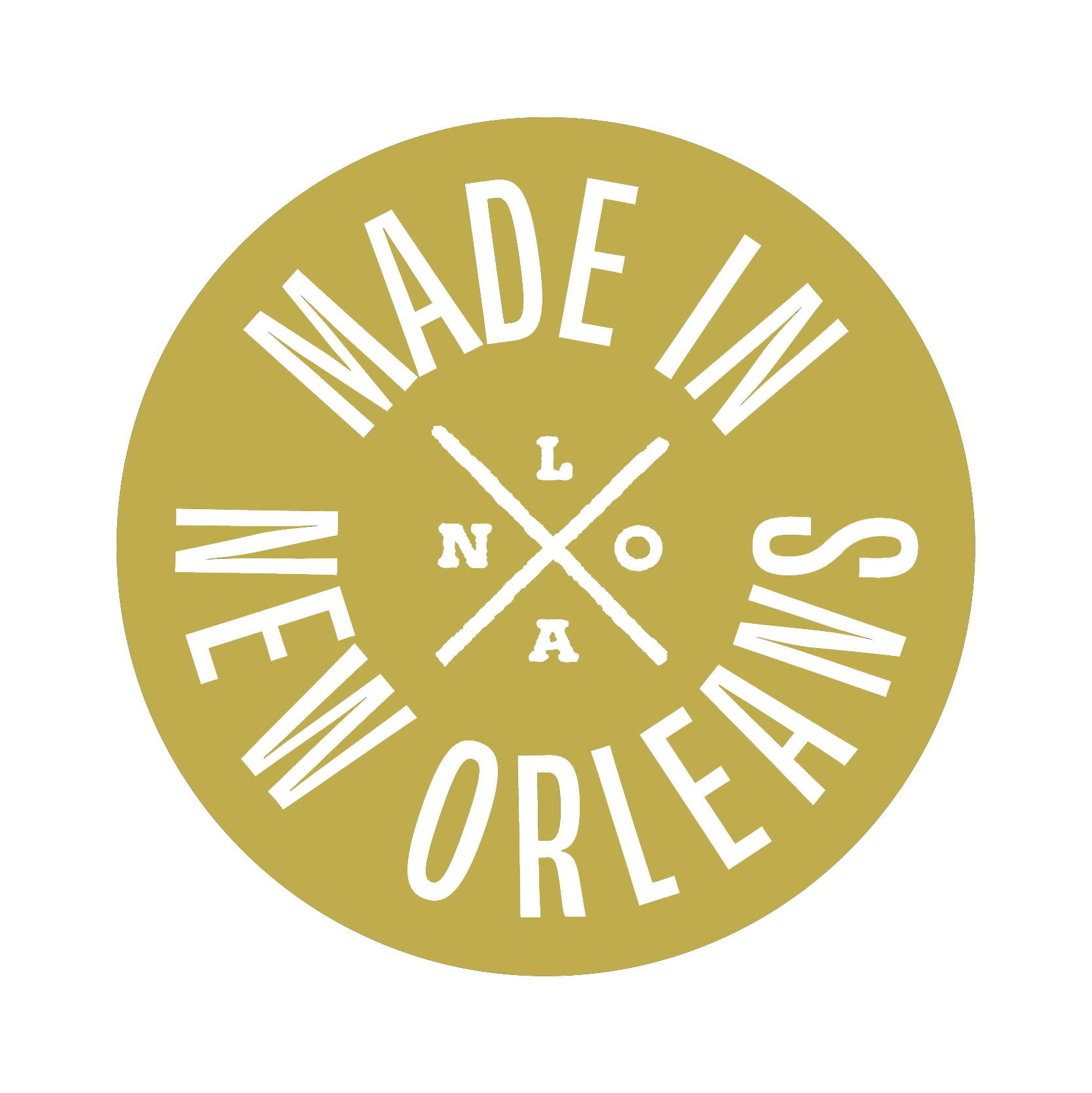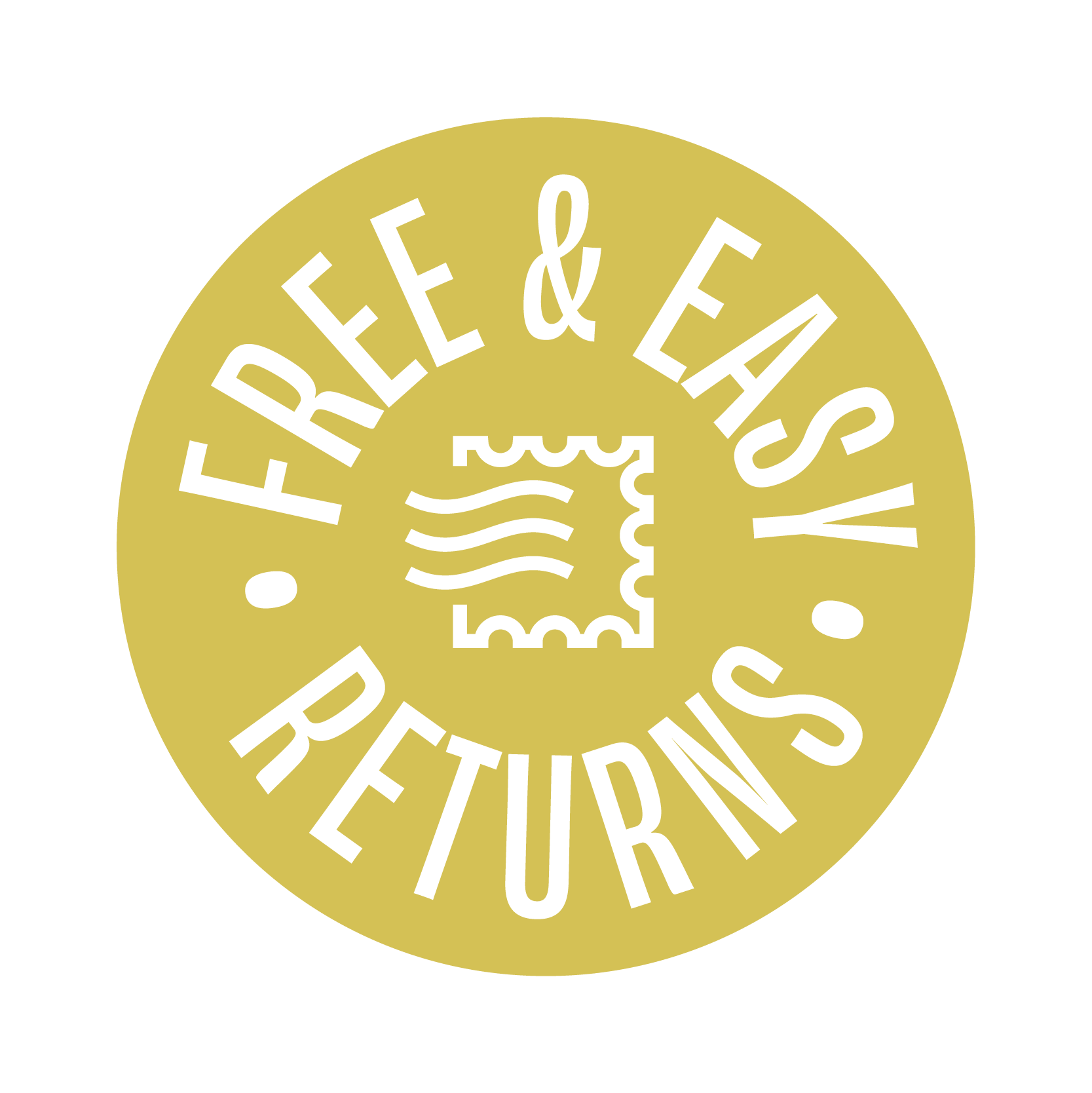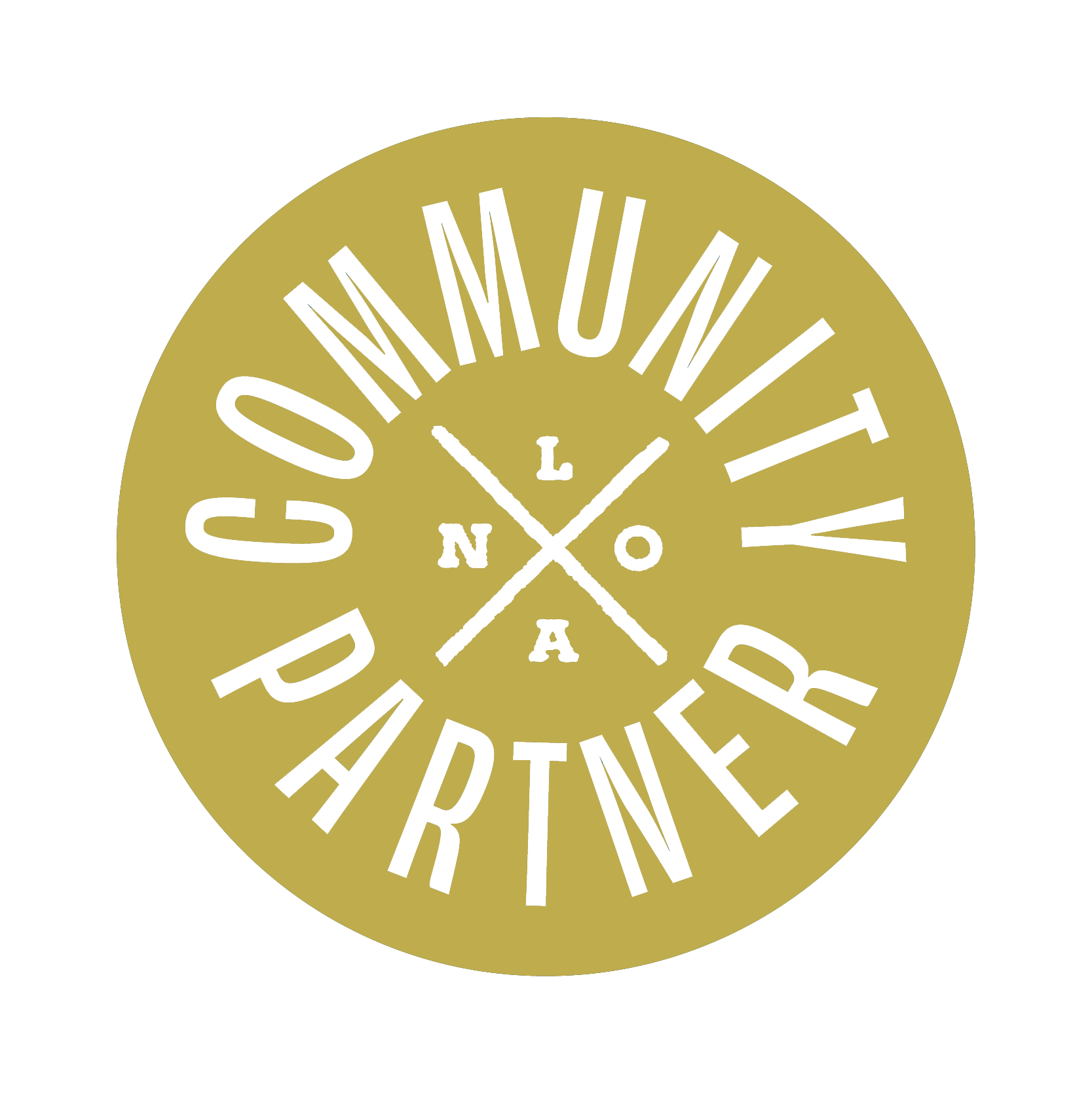A designer and musician, Scott crossed paths with Blake sometime in the late 2000s—the origin story still TBD. Good thing they did: his analog, rough-textured touch turned scrappy ideas into classic Dirty Coast designs that we still sell.
Blake
When do you recall us first connecting and starting to work on designs together?
Scott
I’m terrible with dates, but maybe around 2007. I was living in Atlanta. The first design might’ve been Turducken or Tivoli Circle.
Blake
I checked email—our first thread is late 2008. We were talking about the Tree Rings timeline, and also Turducken and Tivoli. You had that analog, rough-textured feel I wanted—less clean—so I jumped at the chance to work with you. I wish I remembered the initial intro. Could’ve been a Google search. Pinterest didn’t exist yet—maybe Behance?
Scott
I was doing a lot of concert coasters/posters—Spanish Moon in Baton Rouge, a few things for Anthony “Turducken,” and shows at Mermaid.
Blake
It’d be hilarious if I found you by Googling “turducken” and stumbling onto your work with Anthony—who I knew.
Scott
I also did some pieces for TwiRoPa for him.
Blake
That could be it. I was tight with Angel, who started TwiRoPa with Steven Lesser. My studio built their Flash site. So either through Anthony or Angel I discovered your work.
We started sending you not just Dirty Coast designs but also event posters like the Not-So-Super Superhero party. By 2010 we cranked out a lot: Kenna Brah, King Cake Baby, and one of our longest-running evergreens—River. Lake. Uptown. Downtown.
Scott
Honestly, most of those old designs have evaporated from my brain until I see one on the street and think, “Oh yeah, I did that.”
Blake
What was your background before we started working on those early designs?
Scott
Music. Up until right before we linked up, that was my world. I moved out of Louisiana and started focusing on graphic design. Before that I played in bands—The Bingo Show and others—and screen-printed show posters. I’d always been into art. When I decided I needed a “real job,” I pivoted to design—right around when we started collaborating.
I was also friends with Erik Keisewetter, who did some designs for you back in the day.
Blake
That could be the connection. Erik designed our logo and worked on several of the first designs, along with Mitch Paone and Vance Kelly. After Katrina he even lived in the back of my office in the Lower Garden District. We’re getting closer—there are plenty of ways our paths could’ve crossed.
What are some of the designs that you've done in the past that are memorable?
Scott
The Compass is probably the biggest one. Also Listen to Your City. And funny enough, that little throwaway NOLA X mark I was putting on designs became its own thing—it’s still around a lot.
Blake
Yeah—we pulled it from Listen to Your City and made it a standalone graphic. There was debate about using it by itself: reclaiming a symbol linked to Katrina and pain, but turning it into something positive. I think it worked.

Scott
That was the idea. Around then, a lot of designers were making small sigils—graphic flourishes that weren’t full logos. I wanted ours to ride that wave but carry a deeper meaning. I knew it might not fly because of the implications, but I liked the idea of taking power over that negative association.
Blake
It’s gone over well over the years.
Scott
I’ve seen it copied tons of times—that’s a good sign.
Blake
Then we started seeing people tattoo it—the exact mark. Same with folks getting “Be a New Orleanian Wherever You Are.” One person even got our ornate Beauty of Entropy design across their back. After that we hired a tattoo shop to create a set of designs—the Dirty Coast Tattoo Project—and we’ve run it four or five times: we pick ten people and offer ten designs.
Scott
That’s very cool.
Blake
Did a few Mardi Gras designs,
Scott
I remember a few Saints designs. I really liked In That Number. That one came out really well. There was also Do Watcha Wanna.
Blake
Oh yeah, really popular one. I did that with Phil Frazier with Rebirth. I used to book them in College for shows, and we became friends.
Scott
I Know What It Means. I really like that one.
Blake
Oh yeah. That is a classic. I love that design. I wear it often.
Scott
When the type worked out well, I was happy. When it works, it really works—and it’s not always easy to get right.
Blake
Another classic is Let’s Eat Lunch and Talk About Dinner. Still popular—we’ve been selling it since 2015.
Scott
It’s definitely cool to see people walking around with your artwork. I’ll sometimes stop folks and tell them I made it—just to make myself feel good.
Blake
What else are you working on now? Still mostly print?
Scott
I started a side business—now more than a side business—in music tech. I do a bit of electrical engineering, so I’ve been creating music devices and selling them. I still take on design work; I’m doing album art for Still Corners right now. After so many years in design I got a little burned out, so it’s been great to have another outlet.
Blake
I loved your illustration work for the Wildsam Guides. We sell those in the shops now—really nice work.
Scott
Thanks. I did two New Orleans editions, and also Santa Fe and a few other cities I didn’t have a connection to—which was a different experience. For NOLA I could shoot my own reference, which helped. Through Wildsam I also did work for Shinola and a few others. It let me branch into a more specific style for those projects.
The hand-drawn stuff is fun, but by the end of a project I’m glad to put down the pen and ink and get back on the computer—it’s a lot.
Blake
What are your thoughts on AI creeping into creative fields? It isn’t replacing illustrators on big projects yet, but it’s definitely having an effect.
Scott
It’s concerning to a degree, across a lot of fields. I’m not so afraid of it that I won’t use it—I see it as a tool when used the right way. Right now you can usually tell when something’s AI, but eventually you may not. My guess is it’ll weed out people who jumped in without much passion, the way easy tools flooded design in the mid-2000s. The folks who care about the craft will adapt. Become an individual in the field to stay afloat.
It’s not going away. It’s a tool you have to consider adding to the arsenal—without letting it do the creative work for you. I’ve used it here and there to generate reference images I couldn’t find. In the past, I’d dig through old National Geographic issues and magazines for collage elements. Sometimes a client wants a particular thing in that style, and finding it “for real” is a needle in a haystack.
Blake
I need to come up with another idea that needs your touch and send it your way. I will brainstorm on something. Thanks for taking the time to chat. I really appreciate it.
Scott
Alright dude. Any time. I’ll talk to you soon.






Leave a comment
All comments are moderated before being published.
This site is protected by hCaptcha and the hCaptcha Privacy Policy and Terms of Service apply.